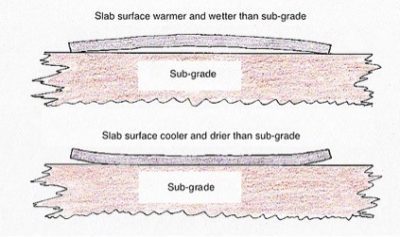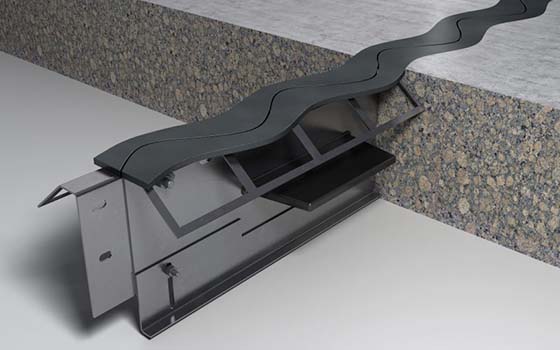PHOTO: Concrete Slab Curling, Courtesy of DCI Coatings blog
Curling in concrete is a significant problem, especially in pavements. NRMCA defines curling as the distortion of a slab into a curved shape or upward or downward bending of the edges, [NRMCA, 2004]. If the curling is significant enough, the slab can crack and potentially have a structural failure. Most often times curling occurs from significant swings in temperature or moisture in the slab.
So, how do fibers resist curling?
Curling due to temperature is induced by a temperature differential in a slab. Higher temperatures cause concrete to expand causing tension. Drying of concrete causes concrete to shrink causing compression. Fibres serve as mini reinforcement which can resist tension strain (movement caused by the induced tension). Fibres help hold the mix together, creating a stronger more durable concrete when used appropriately. In general, for curling to occur with fibres in concrete more energy is required to overcome the resistance because of the higher quality concrete and reinforcement effect.
Fibres also help to keep the water appropriately dispersed throughout the mix. This is great because one of the reasons concrete curls is the aggressive gradient of moisture from the bottom of the slab to the top of the slab. If the moisture is able to stay consistent, or have a minimal gradient, this helps to remove the variable of moisture from the cause of curling, or at least significantly decrease the effect.
Finally, fibres resist shattering forces; shattering resulting from curling is unlikely, but possible. Fibers help to hold the mix together; the fibres will in general help to prevent cracks and crack propagation, so if curling does occur, it should be minimal and cracking should be prevented or minimal.
In summary, fibres create a stronger, more durable mix; help carry tension forces; help maintain consistent moisture distribution; and help resist and reduce cracking. All of these advantages help resist and reduce curling.
References
•NRMCA. (2004). CIP 19 — Curling of Concrete Slabs. Concrete in Practice. Retrieved April 10, 2018, from https://www.nrmca.org/aboutconcrete/cips/19p.pdf.
•NRMCA. (1994). CIP 24 — Synthetic Fibers in Concrete. Concrete in Practice. Retrieved April 7, 2018, from https://www.nrmca.org/aboutconcrete/cips/24p.pdf.
•Dynamic Coatings Inc, blog , Curled and Warped Concrete , Retrieved April 10, 2018. from http://dciflooring.com/uncategorized/curled-and-warped-concrete/
www.www.inforceglobal.com





